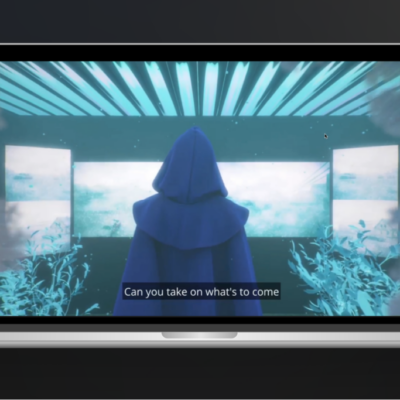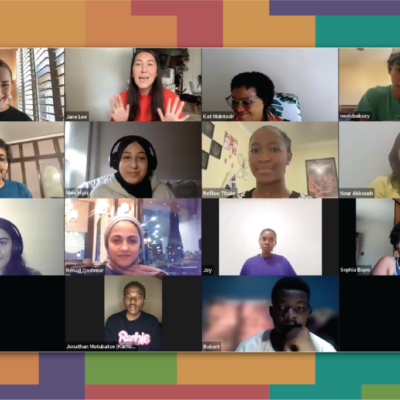
Meaningfully and Realistically Using Games in the Classroom
Practical barriers can keep the most enthusiastic teacher from using games in the classroom. Let's get real — and realistic — about ways to approach game-based learning for the classroom. Teachers are busy, and usually spend much of a given school day completing work from that day while simultaneously preparing work for the next day.
So how, then, do teachers find the games to use in class, play the entire game to understand what and how it teaches, and review best practices? Often, they don't. Here's a more realistic approach to using the power of game-based learning in the classroom.
Look for the Helpers
Game-based learning has gained enough traction in our learning communities that it is much easier than it was in the past to find both high-quality games and powerful resources on how to use them. The trick for teachers is to realize that these resources exist. Look for collections of educational games as well as specific guides for implementing game-based learning.
Collections of Games
My favorite clearinghouse of games is the free Game Up website offered by BrainPOP. These games are curated to share the best games currently available by a wide variety of developers, and the games are grouped by content area. The BrainPOP team aligns the games with Common Core and other standards and offers recommendations on how to integrate the games into instruction. While the games are free of advertisements, BrainPOP does provide links to related content in its subscription-based collection of videos. My team at the Learning Games Lab has placed several of the games we have developed into the collection.

Other free collections also offer a range of games. Games for Change offers recommended games on different content, from typing to math to social justice. Playful Learning Network offers games they have developed, as well as guidance on using games. Paid collections offer a subscription model to access different content. This may be unrealistic for a single teacher to access in many cases, but it can be powerful when a district subscribes.
Simply conducting a search on "educational game for [content]" is surprisingly effective, often pointing to content-specific collections curated by Common Sense Education and other larger sites.
[Related: iThrive's Curated Games Catalog features titles that may support teens' social and emotional skills including kindness, curiosity, empathy, and growth mindset.]
Strategies for Using Games
You may not always have the time to play a game all the way through before using it in your classroom. Fortunately, game overview videos and lesson support materials can help, such as those that accompany our Math Snacks collections of games. Often, if a game developer has not created these support materials, other teachers have. Simply searching for "[name of the game] in classroom" will yield links to overview videos and lesson plans. These can reduce your prep time by helping you understand how to best use the game, and what the gameplay will look like.
Invite Students To Be Reviewers
While it's valuable for students to learn through gameplay, they also need to develop literacy skills for assessing what makes games valuable. Include students in your game selection and review strategies as part of their learning.
In our Learning Games Lab, we asked a group of students to help us identify the best math games in a given content area. We picked about 21 games on algebra and divided students into four groups. Each group was assigned 8-10 of those games to play, so that most games were played by a multiple students. Before playing, students engaged in a group discussion to identify what would make a game "a good game." For example, the class agreed that it had to be interesting, teach the right kind of math, and be challenging.

After the students played the games, we broke them into three new groups. One group was tasked with making recommendations to teachers on the best games; one group was asked to make a case to parents as to which games they should encourage their kids to play; and the third group was asked to make recommendations to game developers on how to craft the best games. These middle school students spent time in the evenings seriously reviewing the games and playing them through. They had thoughtful discussions about the content in the games and the ways in which each game helped the player. Students quickly grew tired of games that simply quizzed them and started looking for games that encouraged more in-depth application.
Ask students the same questions about games that you would ask your colleagues: "Which are the good games?", "Is this the best way to master this content?", "How should we build on what the game teaches?", and "How long will it take to play it all the way through?". You'll find your students are powerful allies in game-based learning.
In engaging students as game review partners, they are better able to articulate which games are worth the time invested to play and can explain how game-based learning is valuable. They can also help teachers understand which games are worth integrating into class time.
Know What to Do When Students are Playing
Gameplay is active even though it can seem passive. Watching our students play games — and hearing them talk about game strategy with each other — is a powerful way to assess their ability and knowledge. While students are playing, walk around, ask them questions, and encourage them to talk with each other. When students talk to each other about the gameplay, they are also talking about the content, so encourage a noisy, collaborative, and social atmosphere. Encourage students to ask you and each other questions when they are stuck, and ask them to explain what they are doing.
I've found it's powerful when a student hits a difficult place to identify with them and encourage them to learn from others. "That does seem hard. Class, has anyone else mastered this? I don't know how to get past this one level." Redirect students' questions to each other so that you can understand if they need help with gameplay or content. Often, I've found that a student who is weak in the content area may be strong with gameplay strategy, and it helps both students feel valuable.

Encourage students to reflect on their gameplay. This may happen as you ask them questions while they play, or as you encourage them to share what they did with others. It's also important to reflect as a group once the gameplay is done. "How did we solve this problem?" "What was the hardest part of the game?" "What can you do now that you couldn't do at the beginning of the game?" This reflection helps them identify how they have improved and helps you know what gaps still need to be addressed.
__________
There are some practical barriers to using games in school. But once we go to the effort to remove these barriers, let's make sure our gameplay time is the best possible way to help our learners understand the content and processes we're trying to teach. It's our work as educators that helps our students more than any one game. When we take an active role in choosing games, helping students evaluate games, and learning from students, we model more than just game-based learning — we model lifelong learning.
* * *
About the Author

Barbara Chamberlin, PhD, oversees research and development at the Learning Games Lab at New Mexico State University, a non-profit educational production studio. She has a passion for user testing, math and science education, and hands-on learning. Her current projects include apps for pre-school students on physical education and healthy eating, chemistry learning tools for college students, and pre-Algebra games for middle school students. Learn more about her work at learninggameslab.org

